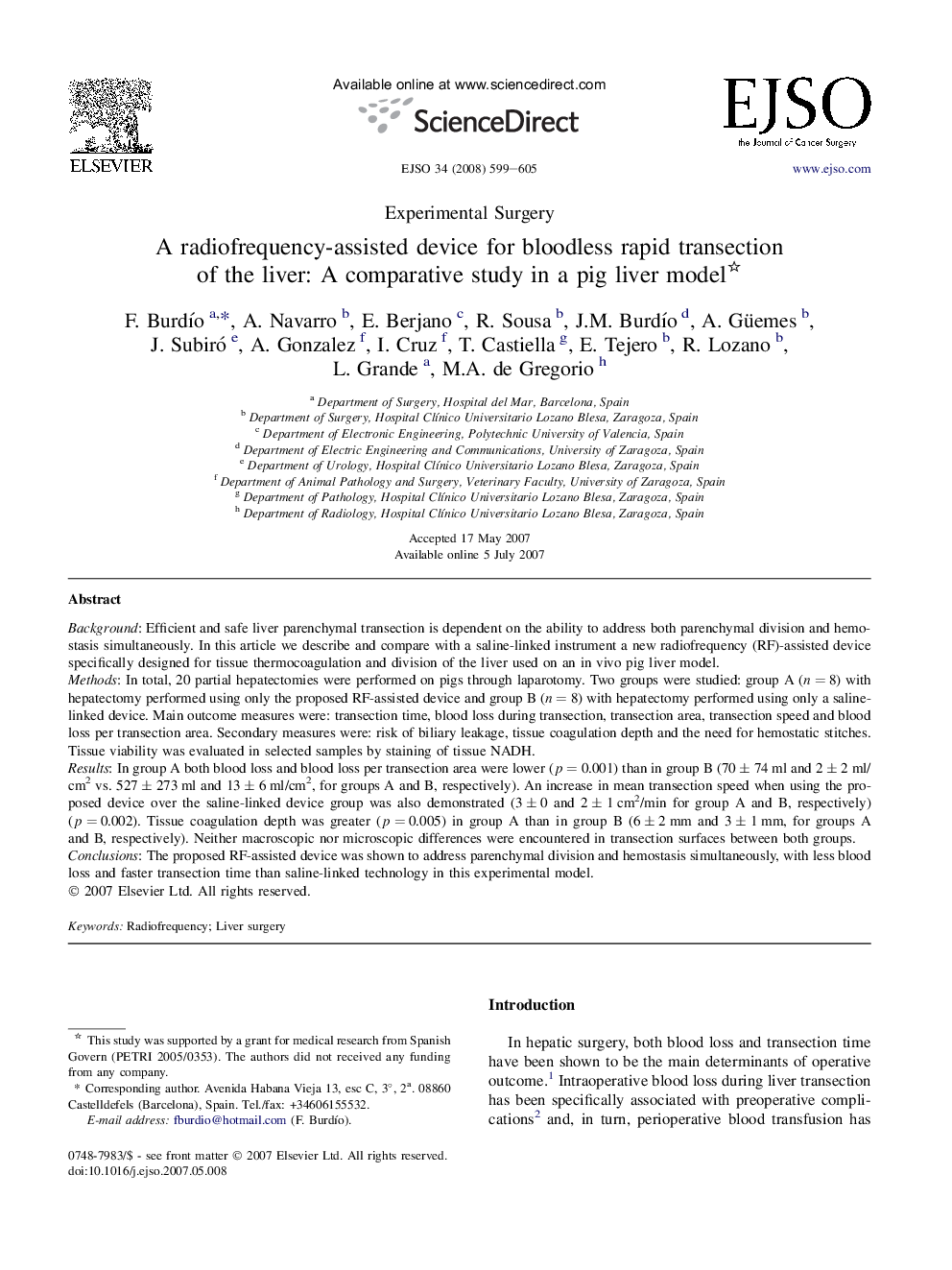| کد مقاله | کد نشریه | سال انتشار | مقاله انگلیسی | نسخه تمام متن |
|---|---|---|---|---|
| 3988289 | 1601464 | 2008 | 7 صفحه PDF | دانلود رایگان |

BackgroundEfficient and safe liver parenchymal transection is dependent on the ability to address both parenchymal division and hemostasis simultaneously. In this article we describe and compare with a saline-linked instrument a new radiofrequency (RF)-assisted device specifically designed for tissue thermocoagulation and division of the liver used on an in vivo pig liver model.MethodsIn total, 20 partial hepatectomies were performed on pigs through laparotomy. Two groups were studied: group A (n = 8) with hepatectomy performed using only the proposed RF-assisted device and group B (n = 8) with hepatectomy performed using only a saline-linked device. Main outcome measures were: transection time, blood loss during transection, transection area, transection speed and blood loss per transection area. Secondary measures were: risk of biliary leakage, tissue coagulation depth and the need for hemostatic stitches. Tissue viability was evaluated in selected samples by staining of tissue NADH.ResultsIn group A both blood loss and blood loss per transection area were lower (p = 0.001) than in group B (70 ± 74 ml and 2 ± 2 ml/cm2 vs. 527 ± 273 ml and 13 ± 6 ml/cm2, for groups A and B, respectively). An increase in mean transection speed when using the proposed device over the saline-linked device group was also demonstrated (3 ± 0 and 2 ± 1 cm2/min for group A and B, respectively) (p = 0.002). Tissue coagulation depth was greater (p = 0.005) in group A than in group B (6 ± 2 mm and 3 ± 1 mm, for groups A and B, respectively). Neither macroscopic nor microscopic differences were encountered in transection surfaces between both groups.ConclusionsThe proposed RF-assisted device was shown to address parenchymal division and hemostasis simultaneously, with less blood loss and faster transection time than saline-linked technology in this experimental model.
Journal: European Journal of Surgical Oncology (EJSO) - Volume 34, Issue 5, May 2008, Pages 599–605